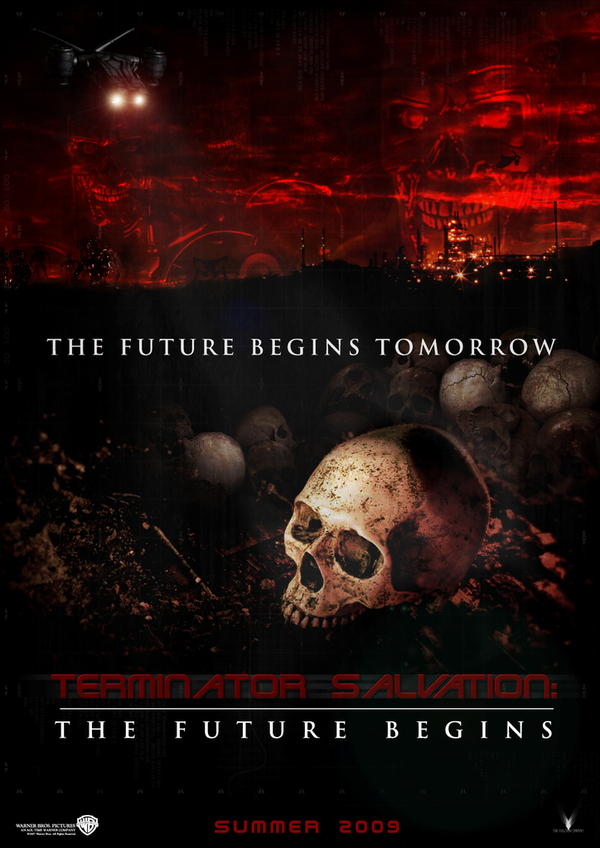In memory of Mark Fisher (1968-2017), we republish from his blog k-punk the following text he presented at the 2009 London Historical Materialism Conference and posted on 29 November 2009. Mark Fisher contributed in many ways to the journal. His groundbreaking work will continue to influence us, as editors and contributors to developing Marxism worldwide and across various disciplines and political spaces. Acollection page has been set up to help his family with his tragic and sudden death. We recommend the following obituaries byJuliet Jacques,David Stubbs,Alex Niven,Simon Reynolds,Craig Gent, andOwen Hatherley.
Thanks to Alberto Toscano, Ben Noys andEvan Calder Williams for making today’s panel on Apocalypse Marxism at the Historical Materialism conference such a success. Parts of the text I used today have appeared here before, but I have pasted below the new bits, the product of some just-in-time theoretical production this morning.
The standard tactic of capitalist realism in relation to eco-apocalypse is to work with the stupid ingenuity of the Symbolic. Here we might think of Lacan’s famous example of Holbein’s Ambassadors. Capitalist realism keeps attention on the ephemeral plenitude of wealth and social status, containing the nullity of ecological catastrophe as an anamorphic blot at the edge of vision. It has the advantage that such an operation is already routinely at the level of individual psychology in respect of death, whose repression no doubt one of the ‘falsities’ that, according to Nietzsche, is necessary for life.
So one tactic is to stop imagining eco-catastrophe and Realise it – which is not to say bring it about, but to act as if it has already happened. This is the intriguing suggestion from Jean-Pierre Dupuy which Zizek takes up, most recently in First As Tragedy, Then As Farce. The only way to prevent the catastrophe, Zizek and Dupuy suggest, is to project ourselves into the post-apocalyptic situation and think what we would have done to have avoided it. In other words, we must act as if what is in fact the case – the inevitability of catastrophe – is the case. The simulation, the as-if, is necessary in part because the Real, here as elsewhere, cannot be confronted directly, and can only emerge in the form of a fiction. The shift to the question of ‘what would we have done’ has the benefit of circumventing the capitalist realist/ postmodernist foreclosure of the old modernist-Leninist question, ‘What is to be done.’ An anti-capitalism need not be imagined any more than the end of the world has to be: it is Realized in the encounter with the fictional-virtual-Real of inevitable apocalypse.
Here we can turn to a rather less august example of fictional apocalypse than either Children Of Men or Atwood’s novels – the much deridedTerminator: Salvation. The interest of this latest Terminator film was the reversal of perspective – we are not now in the pre-apocalyptic near future, but in the ruins post-apocalyptic war, after Judgement Day, in which Skynet has achieved sentience and the Terminators stalk the remains of human resistance. The film’s power derives from its rendering of Earth as a zone fully militarized and desolated by cybernetic war: an artificial inferno built out of dysphoric Black Metal negative eschatology, cargo-culted Christology and numerous other dystopias reprocessed as artificial nightmare. Here, CGI finally codes for CyberGothic.
Alongside Blade Runner and Gibson’sNeuromancer, theTerminator films provided some of the fictional resources from which Nick Land constructed his extraordinary fiction-theory texts of the 90s. Lyotard’sLibidinal Economy + Deleuze and Guattari’sCapitalism and Schizophrenia remixed to remove all traces of anti-capitalism and spliced with the inorganic velocities and psychedelic cyber-topologies of Jungle. Accelerationism as inorganic anti-inhumanism: unsheathed Capital as implacable, rapacious death drive; Capital with its mask of humanity torn off, machines not as reified instrumental reason, but as a non-instrumental non-reason, the exorbitant anti-teleology of Capital’s purposiveness without final purpose de-terraforming the planet into a techno-Bochsian scorched earth unfit for human habitation. Capital as Real = Death, with the Terminator machine death’s head as the technological upgrade of Holbein’s anamorphic skull – artificial intelligence as artificial death – not now reduced to a cuttlefish smear blotting the Symbolic, but looming to the fore in a landscape in which not only human beings but the Symbolic itself is close to total extinction, as asignifying data transfer obsolesces. The imaginary-Real of Capital as the automatic autocracy of dead labour, dead production performed by that which never lived, its products the agents of death, for which there is no possible consumer.
And, indeed, no-one buys or sells much in Terminator: Salvation, just as Land’s vision of Capital as the triumph of death would seem to anticipate an eventual future in which there are no humans left to exploit. Humans are only an impediment to the full Realization of Capital as machinic-fecund death, and here we are as it were confronting Capital’s own fantasy about itself – that it would be possible to remove all the fetters and achieve a kind of total productive capacity, if only it weren’t for pesky humans. Here, we confront one of the ambiguities of accelarationism: by the sheer totality of its negativity, the triumph of death changes signs and becomes a pure positivity.
Another way in which Land’s work and the Terminator fictional system converge – and here we return to Dupuy and Zizek’s post-apocalypse Now temporality, but seen from a very different perspective – is on the question of time-bending. If Capital=A Death is the anti-climatic terminal of human history, it is only because the inhuman future was capable of acting on the past to potentiate its own coming. As Land puts in “Meltdown”:
Convergent waves signal singularities, registering the influence of the future upon its past. Tomorrow can take care of itself. K-tactics is not a matter of building the future, but of dismantling the past. It assembles itself by charting and escaping the technical-neurochemical deficiency conditions for linear-progressive palaeo-domination time, and discovers that the future as virtuality is acessible now, according to a mode of machinic adjacency that securitized social reality is compelled to repress. This is not remotely a question of hope, aspiration or prophecy, but of communications engineering; connecting with the efficient intensive singularities, and releasing them from constriction within linear-historical development.
This is the circuit in which anti-capitalism must intervene. The war must be fought from and on the desert of the virtual-Real apocalypse. One tactic could be to explode the fantasy of unsheathed productive capacities. This involves taking the anti- of anti-capitalism seriously, as itself the sufficient condition for the emergence of a new political-economic organisation. The embrace of the anti- would become a return of a negativity which late capitalism’s compulsory positivity is compelled to suppress at many levels. What this must also be about is a struggle over libido – Land’s texts are soaked in all the inorganic libido that Atwood’s novels, for instance, can only oppose with pious organicisim. An anti-organic anti-capitalism – what might that look like?


